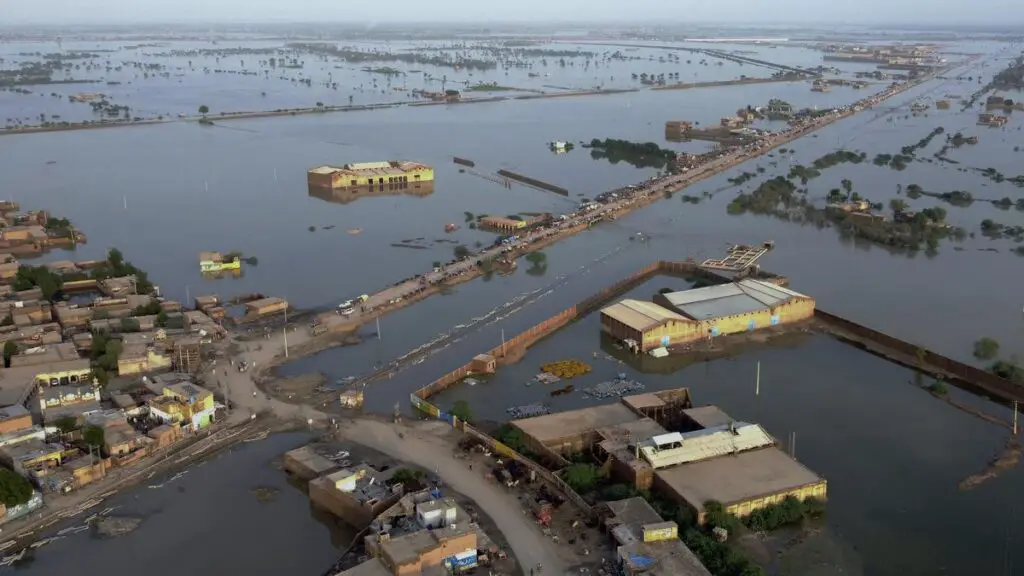Disaster events are becoming more frequent and severe, with their impact expected to worsen. The year 2023 marked the end of the warmest decade on record, characterized by unprecedented extreme weather events and large-scale disasters. The Food and Agriculture Organization (FAO) released a report titled ‘The Impact of Disaster on Agriculture and Food Security,’ which highlighted the significant increase in the frequency of extreme disaster events over the past 50 years.
In the 1970s, there were approximately 100 disaster events per year. However, in the last two decades, that number increased to about 400 globally. The EM-DAT database of the Centre for Research on the Epidemiology of Disasters reported that in 2022, there were nearly 31,000 deaths and an estimated $223.8 billion in economic losses from disasters, impacting over 185 million people.
The agriculture sector, which heavily relies on environmental conditions, natural resources, and ecosystems, is facing growing threats. Hazards such as flooding, water scarcity, drought, diminishing agricultural yields, fisheries depletion, loss of biodiversity, and environmental degradation pose significant risks to agricultural activities and livelihoods worldwide. For instance, in Pakistan, exceptional monsoon rainfall in 2022 caused damages totaling nearly $4 billion to the agricultural sector. Similarly, in the U.S., the National Oceanic and Atmospheric Administration estimated over $21.4 billion in crop and rangeland losses in 2022 due to drought and wildfires.
Data from 88 Post-Disaster Needs Assessment surveys conducted from 2007 to 2022 in 60 countries revealed that agricultural losses accounted for an average of 23% of the overall impact of disasters across all sectors. However, the available data primarily focus on low-income countries and major extreme events, and there is a lack of comprehensive global estimates of economic losses across all sectors.
Droughts were responsible for over 65% of losses impacting the agricultural sector, while floods, storms, cyclones, and volcanic activities each accounted for approximately 20% of the losses. Unfortunately, data on loss and damage are not systematically collected or reported. To address this gap, the FAO report utilized secondary data sources such as EM-DAT and FAOSTAT production data to quantify the impact of disasters on agriculture, with a specific focus on crop and livestock production. The findings showed a gradual increase in estimated losses in these sub-sectors over the past three decades, with a total loss of approximately $3.8 trillion from extreme events over the past 31 years, averaging about $123 billion per year.
Losses across major crop and livestock product groups showed increasing trends. Cereal losses averaged 69 million tonnes annually, while fruits and vegetables, along with sugar crops, recorded average losses of 40 million tonnes each year. Meats, dairy products, and eggs experienced an estimated loss of 16 million tonnes per year.
The distribution of total losses across regions from 1991 to 2021 reflected the geographic size of each region. Asia bore the largest share of economic losses at 45%, while Africa, Europe, and the Americas displayed similar orders of magnitude. Oceania experienced the lowest total losses.
In absolute terms, high-income countries, lower-middle-income countries, and upper-middle-income countries reported higher losses, while low-income countries and Small Island Developing States suffered lower levels of losses. However, when considering losses relative to agricultural value added, low-income countries experienced losses more than double those of upper-middle-income countries on average.
The report highlights the urgent need for systematic data collection and reporting on loss and damage. It emphasizes the importance of assessing the impact of disasters on agriculture, as the sector plays a critical role in food security and livelihoods. By understanding the extent of these losses, effective measures can be implemented to mitigate the adverse effects and enhance the resilience of agricultural systems to future disasters.

